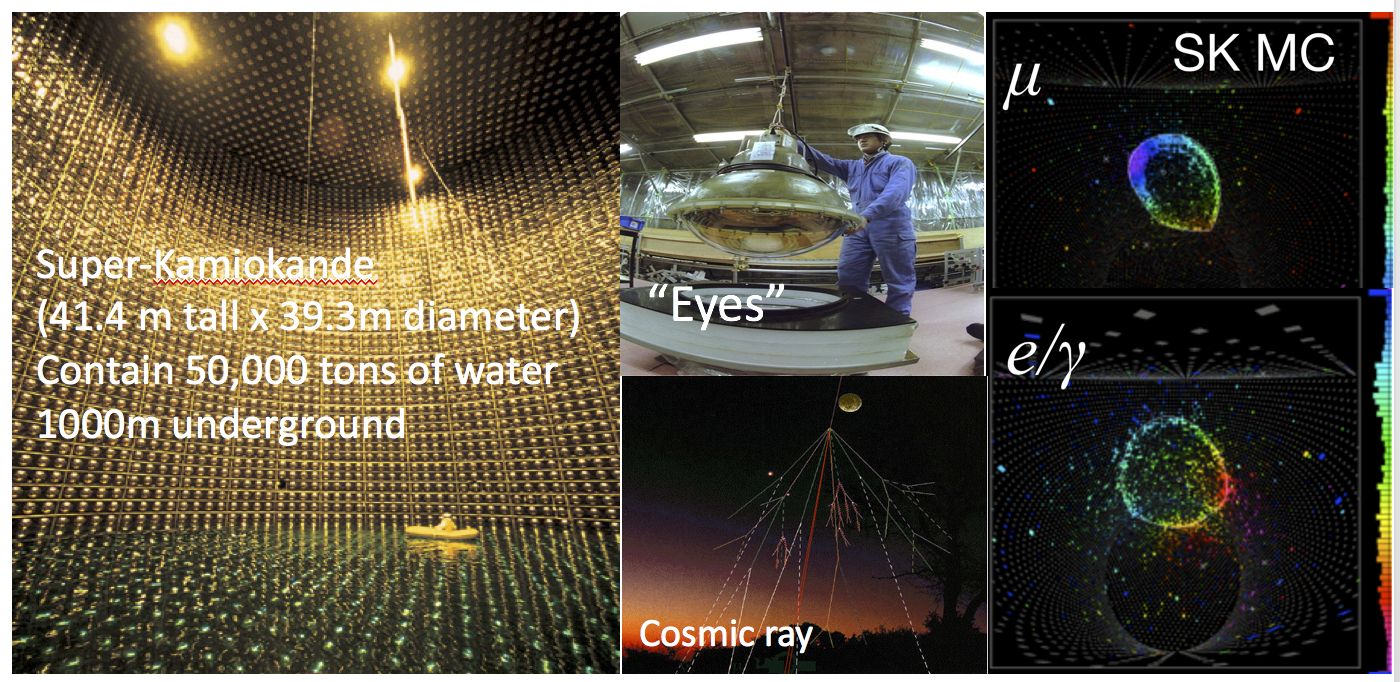
Fig: Super-Kamioka detector, it eyes and the simulated 1ring muon-like and 1 ring electron-like
Information from the trace, basically including the amplitude, position and timing of the hits, is recorded. These information then is used to reconstruct the so-called event along with useful features such as energy, momentum, scattering angle, etc... These events are classified into different categories and depending on the considering physics, some specific sample of events are selected. For example, in Super-K (usage as T2K far detector), 1 ring muon-like events are used for muon neutrino disappearance measurement and 1 ring electron-like events are used for electron neutrino appearance measurement.